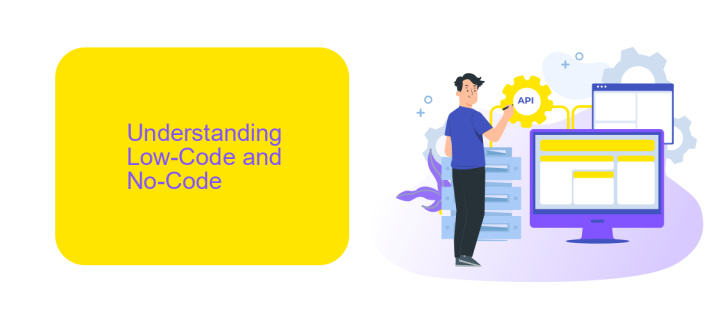Low-Code No-Code Meaning
Low-code and no-code platforms are revolutionizing the way software is developed, allowing individuals with little to no programming experience to create applications efficiently. These tools provide visual interfaces and pre-built components, significantly reducing the complexity and time required for development. As businesses strive for digital transformation, understanding the meaning and benefits of low-code and no-code solutions becomes increasingly essential.
Introduction
In today's rapidly evolving digital landscape, businesses and individuals are constantly seeking ways to streamline their workflows and reduce the time and effort required for software development. Low-code and no-code platforms have emerged as powerful solutions to meet this demand, allowing users to create applications with minimal or no coding experience.
- Low-code platforms provide a visual development environment with pre-built components that can be customized with minimal coding.
- No-code platforms enable users to build applications entirely through graphical interfaces, without writing any code at all.
- Both approaches aim to democratize software development, making it accessible to a broader audience.
One of the key benefits of these platforms is their ability to integrate with various services and tools seamlessly. For instance, ApiX-Drive offers an intuitive solution for setting up integrations between different applications, enhancing the functionality and connectivity of low-code and no-code projects. By leveraging such services, users can automate workflows and improve efficiency without the need for extensive technical expertise.
Understanding Low-Code and No-Code

Low-code and no-code platforms are revolutionizing the way businesses develop applications by enabling users to create software with minimal or no coding knowledge. These platforms provide visual development environments, where users can drag and drop components to build applications quickly and efficiently. This approach significantly reduces development time and costs, making it accessible for non-technical users to participate in the development process.
One of the key advantages of low-code and no-code platforms is their ability to integrate with various services seamlessly. For instance, ApiX-Drive is a powerful tool that helps users set up integrations between different applications without requiring extensive technical skills. By using such services, businesses can automate workflows, enhance productivity, and ensure that their systems work harmoniously together. This democratization of software development empowers organizations to innovate and respond to market demands more swiftly.
Benefits of Low-Code and No-Code Platforms

Low-code and no-code platforms offer numerous advantages that make them highly appealing for businesses and developers alike. These platforms significantly simplify the development process, enabling users to create applications with minimal coding knowledge.
- Speed: With low-code and no-code platforms, development cycles are drastically reduced, allowing for rapid prototyping and quicker time-to-market.
- Cost Efficiency: These platforms reduce the need for extensive developer teams, lowering overall project costs.
- Accessibility: They empower non-technical users to build applications, democratizing the development process.
- Flexibility: Users can easily customize and update applications to meet changing business needs.
- Integration: Tools like ApiX-Drive facilitate seamless integration with various services, enhancing the functionality of applications without complex coding.
By leveraging low-code and no-code platforms, businesses can not only accelerate their digital transformation but also foster innovation by enabling a broader range of employees to participate in the development process. These platforms are transforming the way applications are built, making technology more accessible and adaptable to the ever-changing business landscape.
Use Cases and Examples

Low-code and no-code platforms have revolutionized the way businesses approach software development by enabling non-technical users to create applications. These platforms are particularly useful for small businesses and startups that need to quickly develop solutions without investing heavily in IT resources.
One of the primary use cases for low-code and no-code platforms is in the realm of process automation. Businesses can automate routine tasks, such as data entry and customer service interactions, thereby increasing efficiency and reducing human error. Additionally, these platforms are ideal for creating simple mobile apps and internal tools that streamline operations.
- Automating routine business processes
- Developing mobile applications
- Creating internal tools for operational efficiency
- Setting up integrations with other software and services
For instance, ApiX-Drive is a service that facilitates seamless integrations between various applications, allowing businesses to automate workflows without writing code. This is particularly beneficial for companies looking to connect their CRM systems with marketing tools, email platforms, and other business applications effortlessly.
- Automate the work of an online store or landing
- Empower through integration
- Don't spend money on programmers and integrators
- Save time by automating routine tasks
Future of Low-Code and No-Code Development
The future of low-code and no-code development is poised for exponential growth as businesses seek to accelerate digital transformation. These platforms empower non-technical users to create applications and automate workflows, reducing the dependency on traditional coding. With advancements in artificial intelligence and machine learning, we can expect these platforms to become even more intuitive and capable, allowing for more complex solutions to be built with minimal technical expertise.
Moreover, the integration capabilities of low-code and no-code platforms will continue to expand. Services like ApiX-Drive, which facilitate seamless integrations between various applications, will play a crucial role in this evolution. By enabling users to connect different systems effortlessly, these services will enhance the functionality and versatility of low-code and no-code solutions. As a result, businesses will be able to innovate faster, reduce costs, and respond more agilely to market changes, solidifying the importance of these platforms in the future of software development.
FAQ
What is Low-Code/No-Code?
Who can benefit from Low-Code/No-Code platforms?
How do Low-Code/No-Code platforms work?
Can Low-Code/No-Code platforms be used for automation and integrations?
Are there any limitations to using Low-Code/No-Code platforms?
Strive to take your business to the next level, achieve your goals faster and more efficiently? Apix-Drive is your reliable assistant for these tasks. An online service and application connector will help you automate key business processes and get rid of the routine. You and your employees will free up time for important core tasks. Try Apix-Drive features for free to see the effectiveness of the online connector for yourself.


